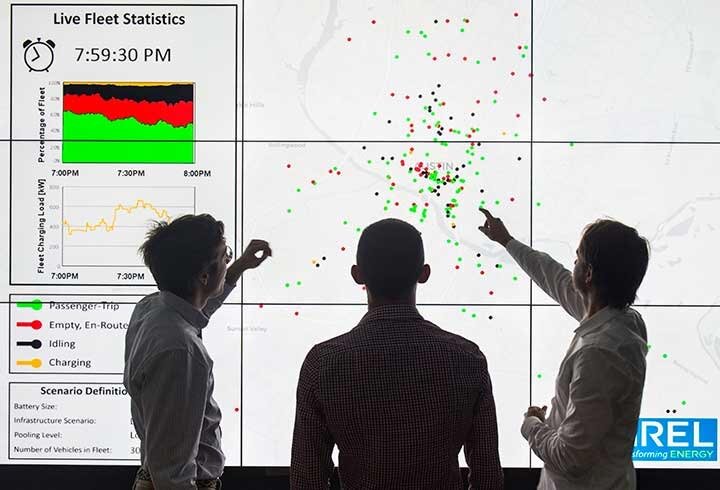AUTONEWS

Researchers explore charging flexibility of shared automated electric vehicles
The transportation industry is on the cusp of transformation, namely through vehicle electrification, automation, and sharing. At the intersection of these trends are shared automated electric vehicles (SAEVs).
While such vehicles offer the possibility for lower costs, reduced emissions, and a better travel experience, their uncoordinated charging at scale could stress the electric grid and increase costs, especially as the SAEV market share rises. To mitigate these issues, a research team from the National Renewable Energy Laboratory (NREL) explored the potential charging flexibility of future SAEV fleets, now in their infancy.
"To determine their flexibility, first we synthesized travel demand for four major U.S. cities: Austin, Detroit, Washington, and Miami," said NREL's Matthew Moniot, advanced vehicle simulation and data analysis engineer. "Then we used a coordinated charging model geared to reduce fleet charging costs in response to time-varying electricity prices, assuming five different plausible electricity generation mixes for the year 2040."
Study Results Point to Significant Energy Cost Savings
"Our analysis indicates that SAEV charging loads are highly flexible and offer the potential for substantial energy cost savings, ranging from 13% to 46% across various simulated scenarios," Moniot added. "Via coordinated charging, we can shift the timing of charging events to take advantage of lower electricity prices without negatively impacting the fleet's ability to meet the mobility needs of users."
This research was detailed in a recent SAE International technical paper—"Understanding the Charging Flexibility of Shared Automated Electric Vehicle Fleets"—authored by Moniot along with NREL's Yanbo Ge, Nicholas Reinicke, and Alex Schroeder.
Analysis Leverages NREL Data and Tools
To conduct the analysis, the team employed NREL's Highly Integrated Vehicle Ecosystem (HIVE) simulation framework, which simulates the operation of SAEV fleets over travel demand data sets, along with local projected electricity prices from the Regional Energy Deployment System Model.
HIVE's flexible design enables researchers to build large-scale simulation matrices and compare outcomes across scenarios that vary with respect to parameters such as location, vehicle types, charging and fueling station networks, fleet operational behavior, dispatching algorithms, and more.
Provided by National Renewable Energy Laboratory

Nenhum comentário:
Postar um comentário